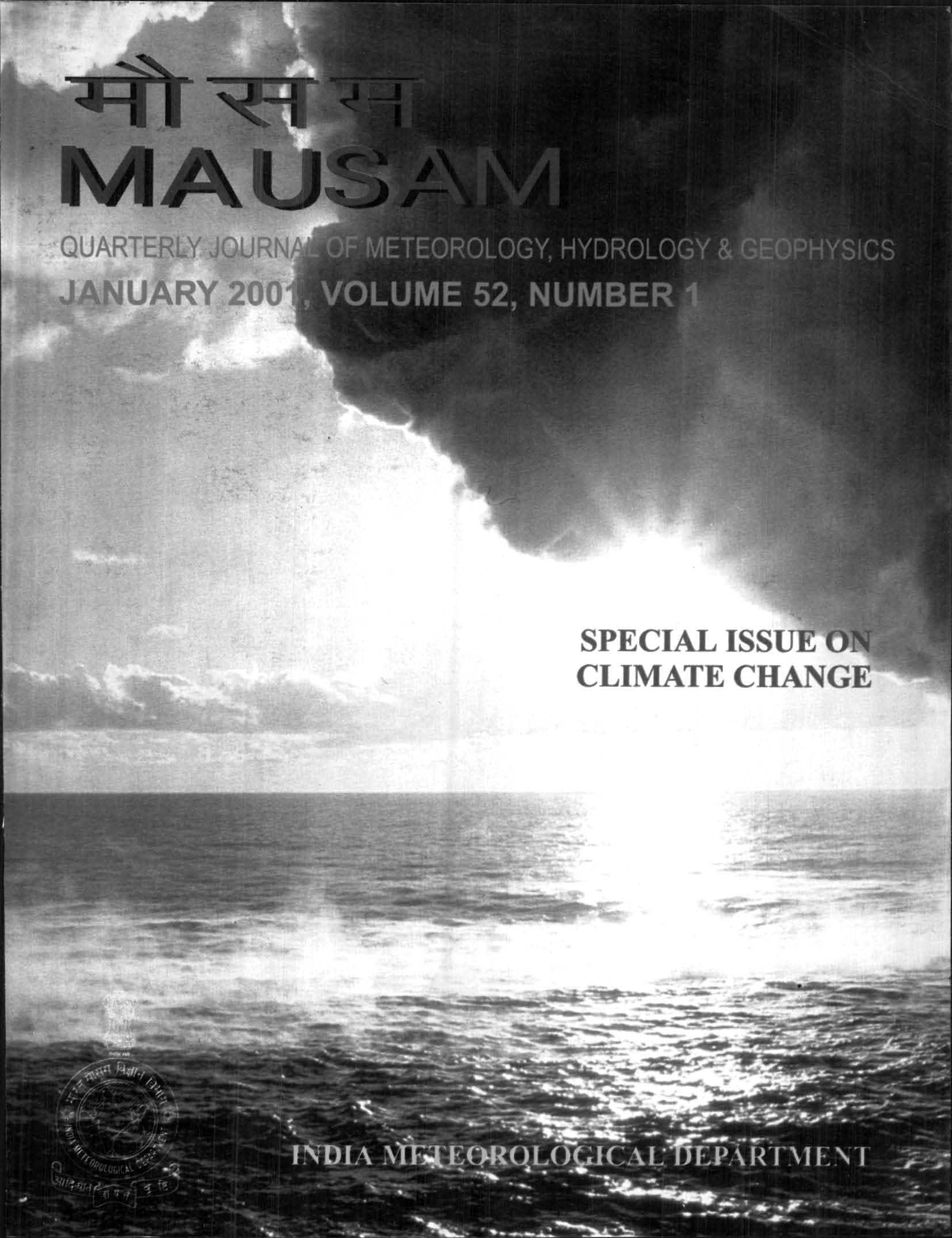Interactions among deep convection, sea surface temperature and radiation in the Asian monsoon region
DOI:
https://doi.org/10.54302/mausam.v52i1.1679Abstract
The climatic interactions among deep convection, sea surface temperature and radiation in the Asian monsoon region have been examined using various satellite-derived data sets of the period 1983-90. Annual average Frequency of Deep Convection (FDC) is maximum over the equatorial east Indian ocean and adjoining west Pacific and Indonesian region. Maximum FDC zone shifts to Bay of Bengal during the monsoon (June-September) season.
There is weak relationship between the variations in FDC and SST in the Indian ocean. Deep convective activity was suppressed over most of the tropical Indian ocean during El Nino of 1987 in spite of warmer SSTs. The pattern of inter-annual variation between FDC and SST behaves differently in the Indian ocean basin as compared to the Pacific ocean basin. Deep convective clouds interact with radiation very effectively in the Asian monsoon region to cause large net negative cloud radiative forcing. Variation in FDC explains more than 70% of the variation in surface short-wave cloud radiative forcing (SWCRF) and long wave cloud radiative forcing (LWCRF) in the atmosphere.
On inter-annual scale, warmer SSTs may not necessarily increase deep convection in the Indian ocean. However, the inter-annual variation of deep convective clouds influences significantly the radiative budget of the surface-atmosphere system in the Asian monsoon region. The satellite observations suggest that warmer SSTs in the Indian ocean might have resulted from an increase in the absorbed solar radiation at the surface due to a reduction in deep convective cloud cover.
Downloads
Published
How to Cite
Issue
Section
License
Copyright (c) 2021 MAUSAM

This work is licensed under a Creative Commons Attribution-NonCommercial 4.0 International License.
All articles published by MAUSAM are licensed under the Creative Commons Attribution 4.0 International License. This permits anyone.
Anyone is free:
- To Share - to copy, distribute and transmit the work
- To Remix - to adapt the work.
Under the following conditions:
- Share - copy and redistribute the material in any medium or format
- Adapt - remix, transform, and build upon the material for any purpose, even
commercially.



